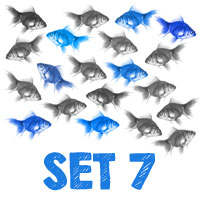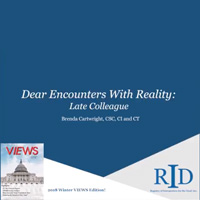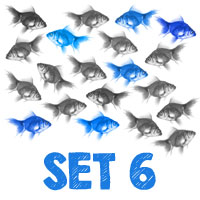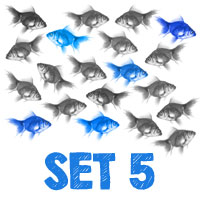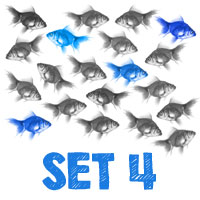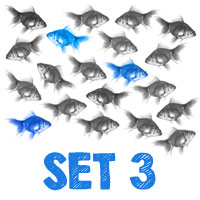Interpreter Tips Articles
Signs That Are Close... But Not the Same - Set 7
This article is part of our “Signs That Are Close... But Not the Same” series, which highlights signs that look similar, but have different meanings. The signs discussed in this article include (1) BRAIN vs. THINK, (2) COLOR vs. FRIENDLY, (3) OH I SEE vs. YELLOW, (4) HISTORY vs. HARD OF HEARING, and (5) FANCY vs. FINE.
Interpreter Q & A: Should interpreters share stories about their day (and their clients)?
This Interpreter Q & A asks: My neighbor is an interpreter and she was telling me about all the gory things she has to face on a daily basis as an interpreter: feces, fungus, blood, naked bodies, nasty smells, foul language etc... No names of clients were disclosed but I couldn’t help but wonder how Deaf people would feel if they knew that she was talking and laughing about them. I remember when I was in the hospital, I was so sick I puked. I’m sure my poop stunk. I’m sure I looked like crap. I hope my nurses didn’t talk about me. I think the same should apply to interpreters. What is your opinion about this?
This article is part of our "Dear BC, Interpreter Q & A” series, which answers questions on interpreting and Deaf culture from multiple perspectives. This article was also published in the Spring 2018 (Issue 35 Volume 2) Edition of VIEWS Magazine from RID.
Interpreter Q & A: What to do when your team interpreter has an unexcused (and provocative) absence?
This article is part of our "Dear BC, Interpreter Q & A” series, which answers questions on interpreting and Deaf culture from multiple perspectives. This article was also published in the Winter 2018 Edition of VIEWS Magazine (page 28-29) from RID. VIEWS is a digital publication distributed quarterly by the Registry of Interpreters for the Deaf (RID) and dedicated to the interpreting profession. The magazine includes RID member spotlights, announcements from the RID board, and engaging stories about issues impacting the ...
Interpreter Q & A: Why do ITP students date Deaf people while they are in the program?
This Interpreter Q & A asks: A recent phenomenon I have noticed is a growing tendency for ITP students to date Deaf people while they are in the program. What is behind this?
This article is part of our "Dear BC, Interpreter Q & A” series, which answers questions on interpreting and Deaf culture from multiple perspectives. This article was also published in the Fall 2017 Edition of VIEWS Magazine from RID.
Signs That Are Close... But Not the Same - Set 6
This article is part of our “Signs That Are Close... But Not the Same” series, which highlights signs that look similar, but have different meanings. The signs discussed in this article include (1) VACATION vs. DAY OFF, (2) CONCERN vs. EXCITE, (3) PREFER vs. TASTE, (4) LONELY vs. REAL, and (5) ODD vs. LOOK FOR.
Signs That Are Close... But Not the Same - Set 5
This article is part of our “Signs That Are Close... But Not the Same” series, which highlights signs that look similar, but have different meanings. The signs discussed in this article include (1) SATISFY vs. RELIEF, (2) COMPLICATED vs. VERY UGLY, (3) SEMESTER vs. SYSTEM, (4) GAME vs. CHALLENGE, and (5) ELECTRICITY vs. PHYSICS.
Signs That Are Close... But Not the Same - Set 4
This article is part of our “Signs That Are Close... But Not the Same” series, which highlights signs that look similar, but have different meanings. The signs discussed in this article include (1) OPEN vs. CLOSE, (2) LOVE vs. HUG, (3) ICE SKATE vs. ROLLER SKATE, (4) BLACK vs. SUMMER, and (5) CAN vs. POSSIBLE.
Interpreter 4-1-1: The Importance of Interpreters Knowing Their Own Comfort Zone
Every human being has biases and the ability to predict events is one of the most valuable you can cultivate as an interpreter. As interpreters we have unique access to the lives of our clients. We need to know ourselves and our hidden biases. What content or situations would you not feel comfortable interpreting? What interpreting situations are deal breakers? What steps could you take when you find yourself in these situations?
Signs That Are Close... But Not the Same - Set 3
This article is part of our “Signs That Are Close... But Not the Same” series, which highlights signs that look similar, but have different meanings. The signs discussed in this article include (1) NUT vs. NOT, (2) PAPER vs. SCHOOL, (3) NAME vs. WEIGH, (4) TEACH vs. NONE, and (5) ROOF vs. HOUSE.
Interpreter Q & A: Wearing a Brace While Interpreting
This Interpreter Q & A asks: I am currently wearing a brace on my wrist for Carpal Tunnel Syndrome. Today during a break the Deaf client came up to me and asked me to remove my brace because she found it distracting and it affected my clarity. She also said it made her feel guilty for having to make me work. What do you think I should have done?
This article is part of our "Dear BC, Interpreter Q & A” series, which answers questions on interpreting and Deaf culture from multiple perspectives.
